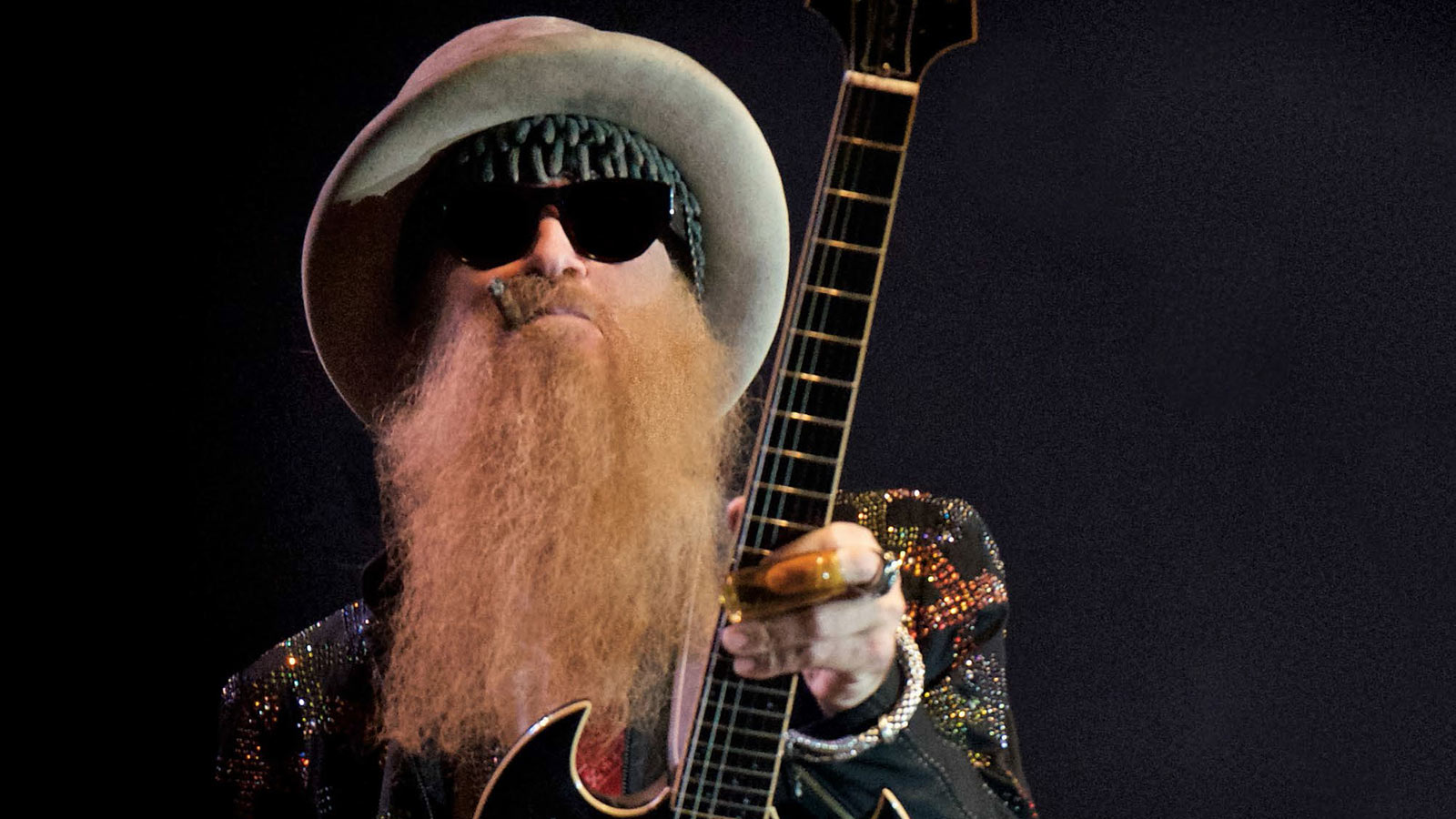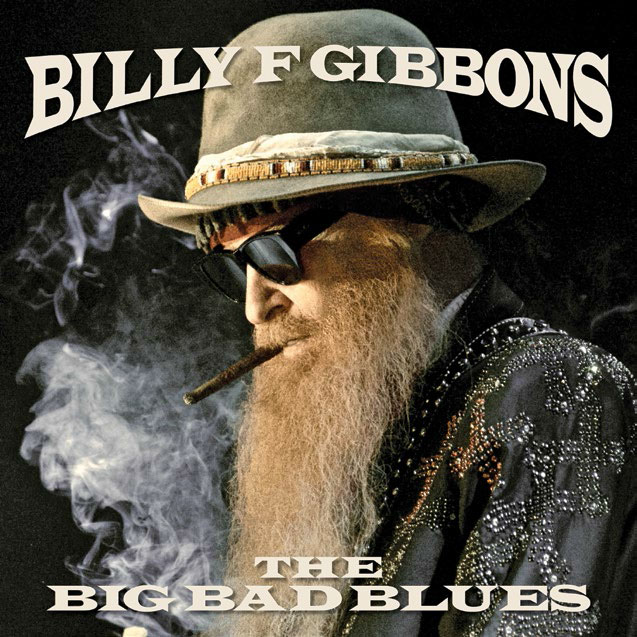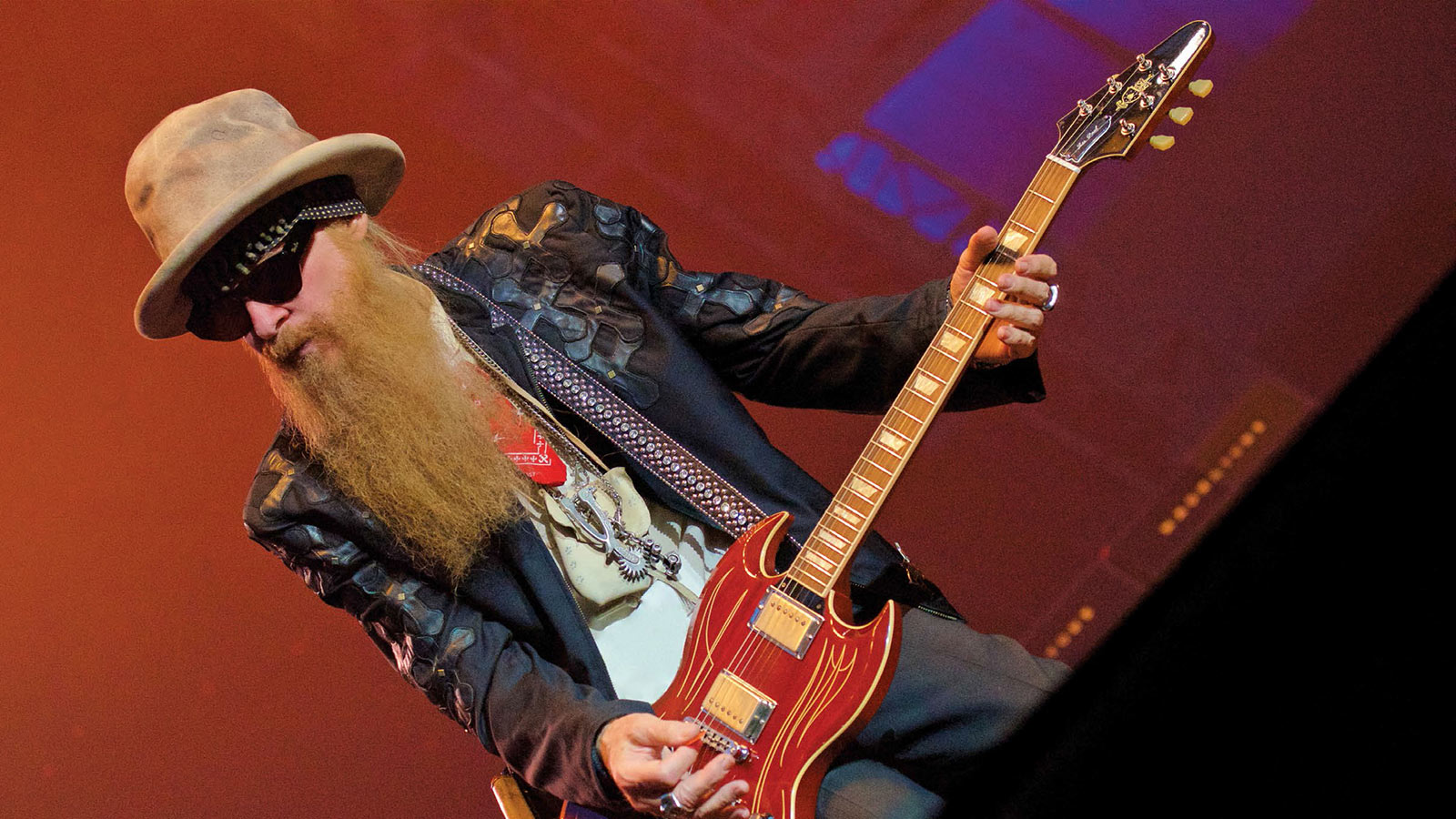ZZ Top Legend Billy Gibbons Breaks Down New Solo Album, 'The Big Bad Blues'
Even at 68, Billy Gibbons is still moving fast. Here, the ZZ Top legend discusses how he returned to his roots for his terrific new solo album.

Never let it be said that Billy Gibbons isn’t honest. When Guitar World calls the legendary ZZ Top guitarist on his cell phone and asks him where he is, Gibbons, who is out on tour with the Little Ol’ Band from Texas, readily admits he has no idea. “We were in Cheyenne, Wyoming, and we were pulling up stakes last night but I forgot to ask where we were going,” he admits. “So it’s a bit of a mystery on my end!”
There is at least one thing he’s sure of, however: “I don’t hear the buzz of any slot machines, so I know we’re not in Vegas.”
Of course, anyone who’s been gigging for half a century is allowed a locational lapse here and there. What’s more, Gibbons, now 68, is still moving incredibly fast. Even as he’s out on the road with ZZ Top, he’s gearing up for the release of a new solo album, The Big Bad Blues. The follow-up to his 2015 effort, the Cuban-flavored Perfectamundo, the new album, true to its title, finds Gibbons returning to the sound that has always been at the core of his playing, singing and writing. “It’s a rekindling of our attention on an area from which we came,” he says. “And also where we still live.”
To that end, The Big Bad Blues, in addition to a handful of distortion-drenched deep-in-the-pocket Gibbons originals, finds the guitarist tackling some of his favorite blues tunes from the past, including Muddy Waters’ “Rollin’ and Tumblin’ ” and two Bo Diddley songs, “Crackin’ Up” and “Bring It to Jerome.” “We were just having a bit of fun,” he acknowledges.
In the following interview, the always-engaging Gibbons talks to GW about the new album, his gear, his favorite current blues player and, curiously, the reason he chooses to sleep on the floor. In a word? “Solidity.”
What led you to do a straightforward blues album?
Well, as you may recall, we had an interesting success with the Cuban-inspired project called Perfectamundo. And that moved the Concord Records president, Mr. John Burk, to step forward and extend the invitation. He said, “I’d like to pick up the option to do another record. How would you feel about doing something blues-related?” And I said, “Well, that’s where we came from. Let’s give it a shot.”
Get The Pick Newsletter
All the latest guitar news, interviews, lessons, reviews, deals and more, direct to your inbox!
How did you pick the material?
Coincidentally, when Burk was reaching out to us I had returned to our studio down in Texas and I ran into a couple musician pals, namely Greg Morrow, the great drummer from Memphis. And subsequent to that I ran into Matt Sorum, another great drummer. And we started up a jam session, attempting to tackle our favorite blues numbers. And the good news was, Mr. Joe Hardy, the engineer extraordinaire, had the tape machines rolling the whole time. And I guess it was the second or third day where he said, “Hey, why don’t you guys take a listen to some of this stuff you’ve been laying down?” And so we listened and I said, “Wow, the sound is not too far from where we were aiming to go anyway.” And we had a couple Muddy Waters tunes, some Bo Diddley stuff, there were even some Jimmy Reed numbers. That got us started in what we thought was the right direction. And from there I started composing some original material that was also aimed at that bluesy side of things.

What led you to cover the Bo Diddley song “Crackin’ Up”?
That’s one of those songs that’s been covered many times by a number of qualified groups. It unfolded later on in the game because it took the longest time to learn how to play Bo Diddley’s guitar intro. [laughs]
The intro on the original recording is one of those inside-out, upside-down kind of insane compositions. But we were determined to crack the code. So it was an interesting excursion into the unknown.
The Rolling Stones do a great version of “Crackin’ Up” on their Love You Live album. They give it an almost reggae-like feel.
Yeah! That stands out. That’s one of my favorite Stones tracks. They did a bang-up job with it.
You also do “Rollin’ and Tumblin’ ” on the new album. Of all the Muddy Waters songs to choose from, why that one?
I think we were having a bit of fun. We were kind of “metalizing” blues standards and that one, the tempo is insanely fast. But it has an appeal behind it. We were taken with the way it turned out. We said, “Gee whiz, let’s keep it.” So in addition to all of these original compositions we felt some legitimizing factor was behind including what we thought were some of the favorites of those early jam sessions.
It’s interesting to hear you use the word “metalizing.” One of the things I’ve always noticed about how you approach the blues is that you’re not a traditionalist. Whereas there are some players that try to stick as close to the sound and guitar tones of the originals, you’re not so precious with the material. You do your own thing.
Well, that’s a compliment that I’ll take! We’ve always announced that the closest we can get to the blues is being interpreters. Particularly now, with so many of the originators long gone. So it becomes a challenge of interpretation. But I think another word that has to surround these interpretations is that of “feeling.” If it feels right, then you’re on the right track. And as you point out, we’re certainly not strict traditionalists. It’s more an interpretative stab at the art form.
Do you recall the first blues song that really got you?
Yes. I was about 12 years old, and I had a close friend we called Waltaire. Waltaire Baldwin.
Waltaire?
His given name was Walter, but we thought that was too plain. Because even at 12 years old the guy spoke like a poet. So he was not Voltaire, he was Waltaire. [laughs]
Anyway, he had stumbled into the blues quite early on. In fact, he picked up the harmonica and had learned the technique of playing in the cross harp position. He was onto it way, way early. And I remember he found a John Lee Hooker release on Vee-Jay. Of course, it was the classic “Boogie Chillen’.” And that led to… well, if we had two days we could extend the list of blues giants that have impacted me since day one.

But John Lee Hooker was the first.
Yeah. Hearing John Lee Hooker, it was like, “Wow, what is this?”
Are there any new blues artists out there that have grabbed your ear?
Gary Clark Jr. We wound up doing some shows together and his playing style… he grew up in Austin, Texas, born and raised there. And he had really escaped my radar until recently. Maybe that’s a good thing, because he’s mastered a technique that is so timely and, I’d like to use the word “believable.” When he’s delivering a blues number he’s surrounded with that thing called feeling. It’s not a put-on. He’s right there with it.
What gear did you use on The Big Bad Blues?
In the past we’ve experimented with all sorts of contraptions. But this time it just so happened that since these sessions started off as casual get-togethers we weren’t too fussy about what we were plugging into. For amplifiers, we had two. One was a 1965 Marshall 18-watt — one of the rare ones. It runs on 220 [volts]. It was an original English production piece. It’s got two 12-inch speakers rather than the more common 10-inch. The two 12’s are a little more robust. So this thing’s got a rich, rich tone. The other thing we had on hand was one of the new Magnatone 50-watt amps. A 2x12 combo. So we had the Marshall and the Magnatone running full-steam ahead.
As for guitars, of course we had Pearly Gates, our famous 1959 Sunburst Les Paul that’s never too far out of reach. And we also made use of a 1961 Les Paul — it was the year when they transitioned from the figure-eight body shape to the double cutaway. And our engineer Joe Hardy, he brought out his 1960 Fender Precision Bass that he acquired from [Donald] “Duck” Dunn.
Any main pedals?
Yes. The DeArmond tremolo. We’ve been using those for years now. There was also a really odd pedal from Japan, the Shin-ei Companion FY-2 [fuzz box]. It does drastic-sounding things. But we really didn’t stray too far from straight-ahead stuff, just because of how this project unfolded.
Another aspect that might be of interest was that I wasn’t cracking the whip, saying, “Oh, you’ve gotta play like Frank Beard on the drums,” or “You’ve gotta play the bass parts like Dusty Hill.” I think what distinguishes this release from a ZZ Top record is that the personalities were not compromised. Everybody got to play their own thing and their own style. Although what’s funny is, Frank and Dusty, they were peeking in from the other studio where they were busy at work hammering out some starter pieces for a new ZZ Top record. And Frank was particularly flattered in the fact that both Greg Morrow and Matt Sorum were delivering interpretations of how they thought Frank Beard would be playing. [laughs] So it came all the way back around the clock. It was fun.
You’re on tour with ZZ Top right now. I recall reading somewhere that you always sleep on the floor in hotels.
[laughs] Very true. To this day.
Why?
Well, it gives a certain measure of confidence in this topsy-turvy world we call touring. There’s so many unanticipated events that surround every waking moment. To have the solidity of sleeping on solid ground, I just find it comforting. And you combine that with picking a room that has many right angles. Nothing circular. Avoid furnishings that have rounded armrests, for instance. Because the circles have no definition, whereas with right angles you know where you’re going.
That’s probably helpful, considering you told me you don’t even know what town you’re headed toward right now.
[laughs] That’s right!
What about at home? Do you at least have a nice bed to sleep in there?
I do, but I find myself making a pallet on the floor and just enjoying… I keep coming back to the world “solidity.”
What else does Billy Gibbons do at home when he’s not playing music?
Well, you’ll find me hot-footin’ it back to the West Coast. I’ve got a number of ongoing projects with our hot-rodding automotive enthusiast Mr. Jimmy Shine. Right now I’m working with Jimmy on creating what we’re calling the bad little sister of the famous ZZ Top red car from the video days. We’re doing a fender-less version of a ’34 three-window coupe. It’s got suicide doors, and we’ve yanked off the fenders and dropped it down. The chopped top is radical. Someone said, “Gee whiz, you’ve got mail slots for windows!” So it’s gonna be a barnburner. It’s quite engaging and it gives me great satisfaction.
Next year is ZZ Top’s 50th anniversary. What does that number mean to you?
We just came to grips with that unanticipated term. It seems nearly unbelievable. But what we’ve managed to maintain is the enjoyment factor. Someone said, “What has kept you guys together for longer than most marriages?” Quite simply, we still enjoy that we get to do what we get to do. More than anything else we can think of. It’s like the old saying goes — “If you like what you do it’s not a job.”
That’s a special thing.
Yeah, man. And we’re gearing up to do something special. A 50-year celebration’s quite a rarity in the rock ‘n’ roll world. But you know, I was talking to Keith Richards recently, I bumped into him in Nashville, and he was grinning. He said, “If we can follow in the footsteps of Muddy Waters and do this ’til the day we die, then we’re ahead of the game.”
Rich is the co-author of the best-selling Nöthin' But a Good Time: The Uncensored History of the '80s Hard Rock Explosion. He is also a recording and performing musician, and a former editor of Guitar World magazine and executive editor of Guitar Aficionado magazine. He has authored several additional books, among them Kurt Cobain: Montage of Heck, the companion to the documentary of the same name.










